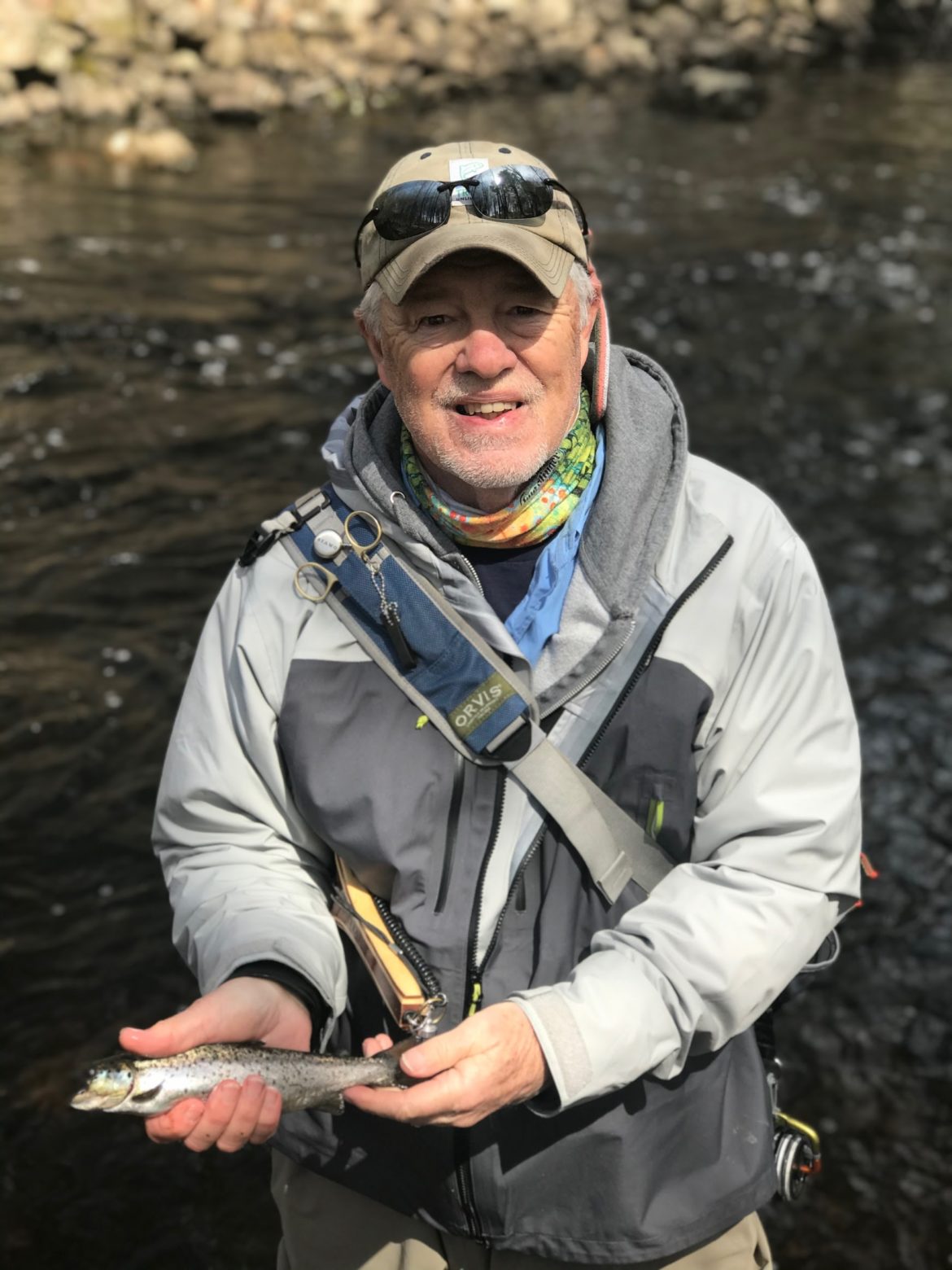Writing On The Fly
By GEORGE LISET
Most fly fishers have a favorite fish that they like to fish for.
I like to haunt the small streams of New England with my 3-weight rod and search for small wild Brook Trout. Those amazing little fish are fun to find and put up a battle on my light fly rod. There are, however, two times a year when I put my hunt on hold and head to the tributaries that flow into Lake Winnipesaukee in search of Salmo Salar Linnaeus, commonly known as landlocked salmon.
My first experience catching landlocked salmon was when I was working at Camp Brookwoods in East Alton. Coach Crowers and I headed out early one morning to troll for salmon with a fly rod. We rigged the reel with leaded line in order to get the fly down to where the fish were. Coach had set up a second-hand fish finder that told us where the fish were and how deep.
Leaded line has different colored sections every 10 feet so you know how deep your fly is. We tied on a fly called a “Winni Smelt” and started trolling. We had two lines out, one on each side of the boat. About an hour into our trip we got some action on one of the rods. Coach reeled his line in while I slowly reeled mine in with the fish. Ten minutes later we netted a beautiful 18” Landlocked Salmon.
My next experience was fishing the Lakeport Dam in Laconia. This time I was using a 6-weight fly rod and floating line. I used an orange Bead Head Wooly Bugger. As I was stripping in my fly, the water exploded and a large landlock tail danced across the water. It then went under and again exploded out of the water and shook its head trying to lose the fly. My rod was almost bent in half.
When I finally landed the landlocked he turned out to be a nice chunky 20 incher. Catching big fish is a different ball game than landing little brookies. Needless to say I was hooked. The word Salmo means leaper, the name given to the species by the Romans. This fish lived up to its name.
Since that experience, I have decided that it is more fun casting a fly for salmon. So, two times a year I plan to head to the tributaries that hold these wonderful fish. In the spring they follow the suckers and other fish that are spawning up the rivers to feed on their eggs. In the fall they head back up the rivers to spawn themselves.
When the word got out that the suckers were heading up the rivers, typically after Ice Out on Winnipesaukee, I made some calls and headed up to the Big Lake. When I arrived at one of my favorite spots, the parking area was half filled. It doesn’t take long for the word to get around. I talked to a few of the men fishing and they said fishing was slow but the river was filled with suckers, so the salmon wouldn’t be far behind.
As I mentioned earlier, fishing for big fish is a different mindset. Think about it, they don’t get big for no reason. I started nymphing a Bead Head Nymph with an egg pattern for a dropper. You could see the suckers spawning and occasionally a salmon swimming, holding behind a rock eating the eggs.
I was drifting my flies right in front of the fish with no takers. Finally, a large salmon took my egg pattern and exploded out of the water. The fish must have been a couple of feet out of the water and shook me off, busting my tippet. As he reentered the water, I swear he smiled at me. Really.
I went home that day empty handed, but my heart was still beating. It was a big fish. I am glad to report that I had more success the next time out. I put on heavier tippet and caught his little brother. I figure I might have another week or two before I head back to my little brookies. Then I’ll wait for the fall.
George Liset of Dover is an outdoor writer and avid fly fisherman who shares insights of his time on the water exploring New Hampshire streams and rivers as well of those around New England. George is a graduate of Wheaton College, Illinois, and the University of New Hampshire.





